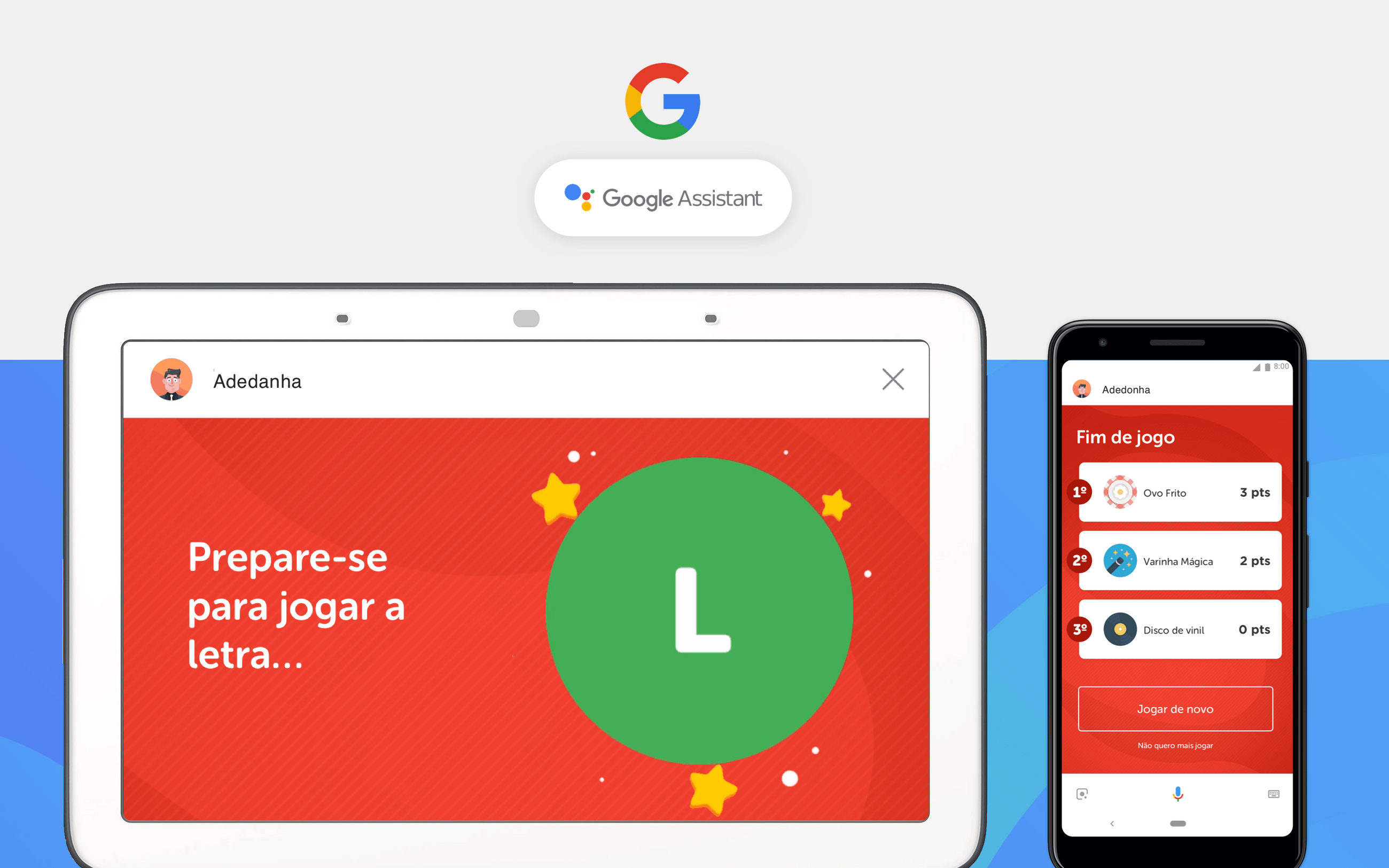
Google and Fanatee invited us to design a conversational version of the trivia game 'Stop!' to be played in speakers and smart displays using Google Assistant.
At this time I was already very into conversational design, but working as the only designer in this project, I had the opportunity to explore a little bit of the Voice User Interface world.
Role
Senior Product Designer
Contribution
User research
Strategic vision
Scope definition
Product design
Validation through testing
Background
Stop! is a game developed by Fanatee that is a complete success in Brazil and I was already a great fan of the game. So, I was very happy to be part of this project.
For the launch of Google Assistant voice in Portuguese, Google invited Outra Coisa (the studio I was working at the time) to design this conversational game that would be one of the first ever experiences available in Portuguese.
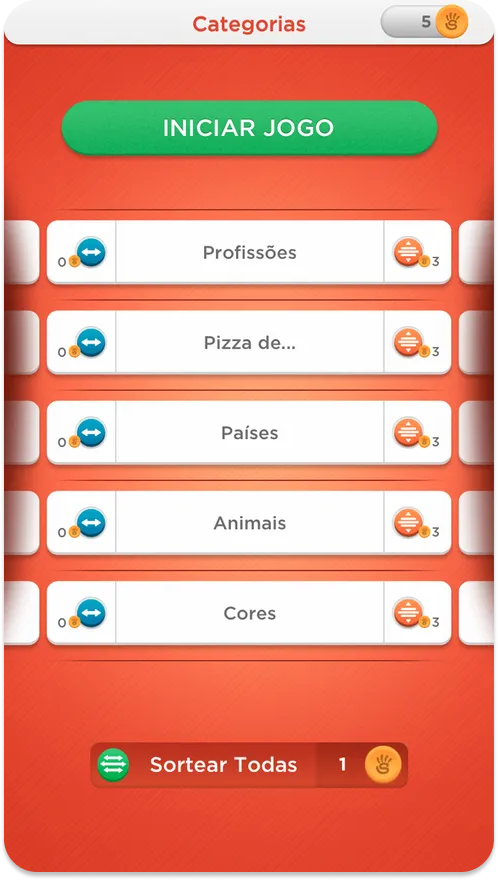
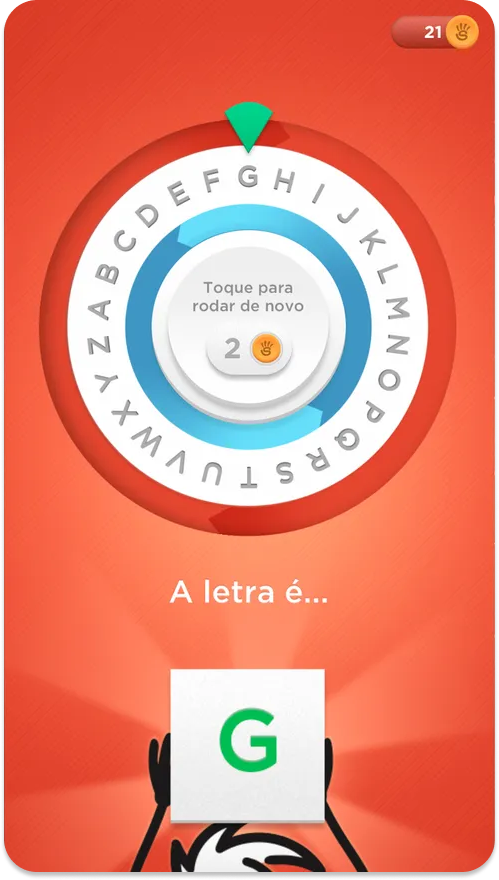
Images from the original Stop! App. Source: TechTudo
Challenges and scope
Considering the platform and the novelty of the technology back then, there were a few constraints we had to overcome in order to create a delightful playing experience.
Available to multiple devices
One of the biggest challenge of the project was that the game was going to be available in multiple devices with very different technologies, such as Google Home, Smart Displays, Smartphones and Smart Speakers. During the process, we had to consider many different scenarios while designing the game so we could achieve a consistent and coherent experience across all of them.
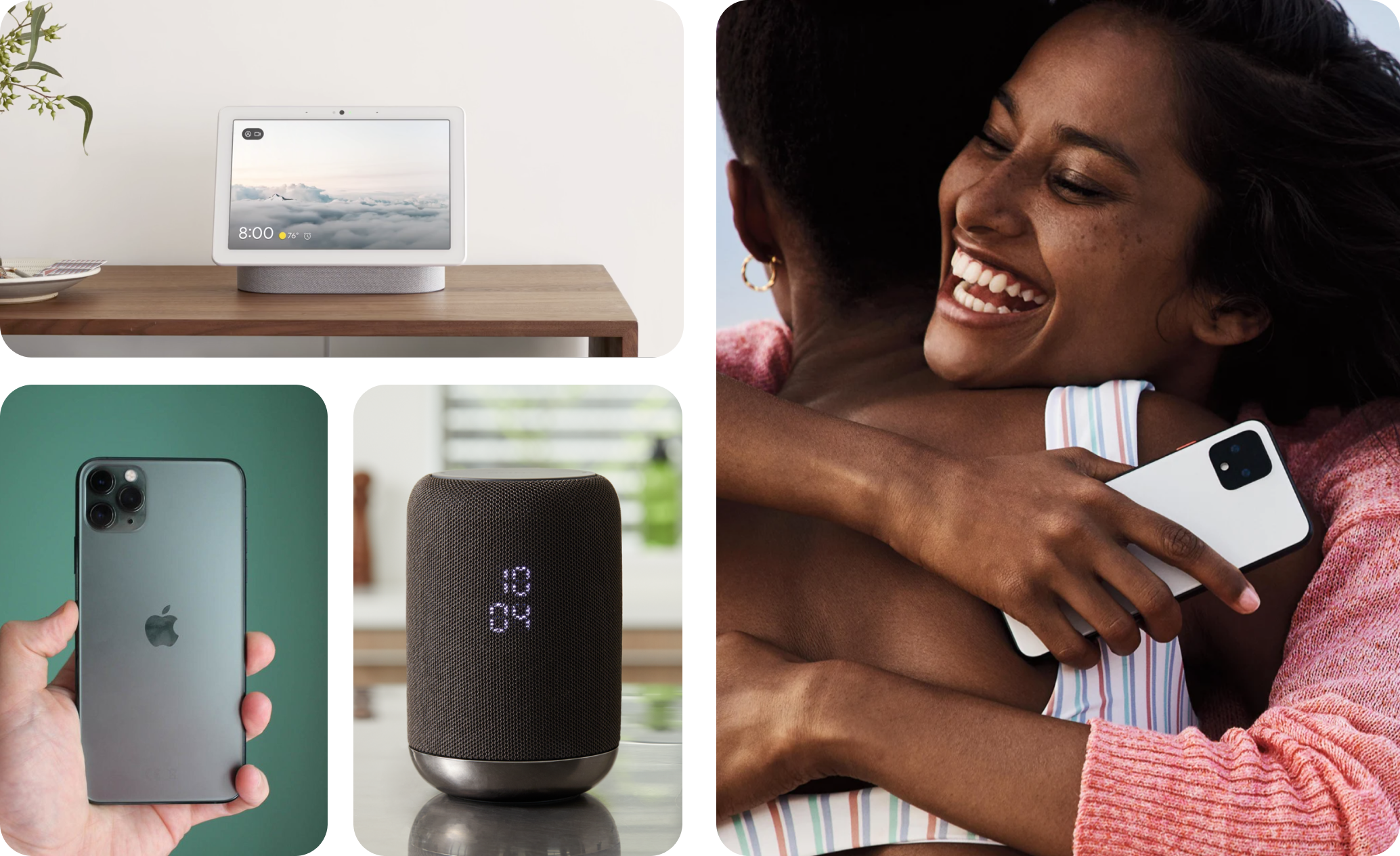
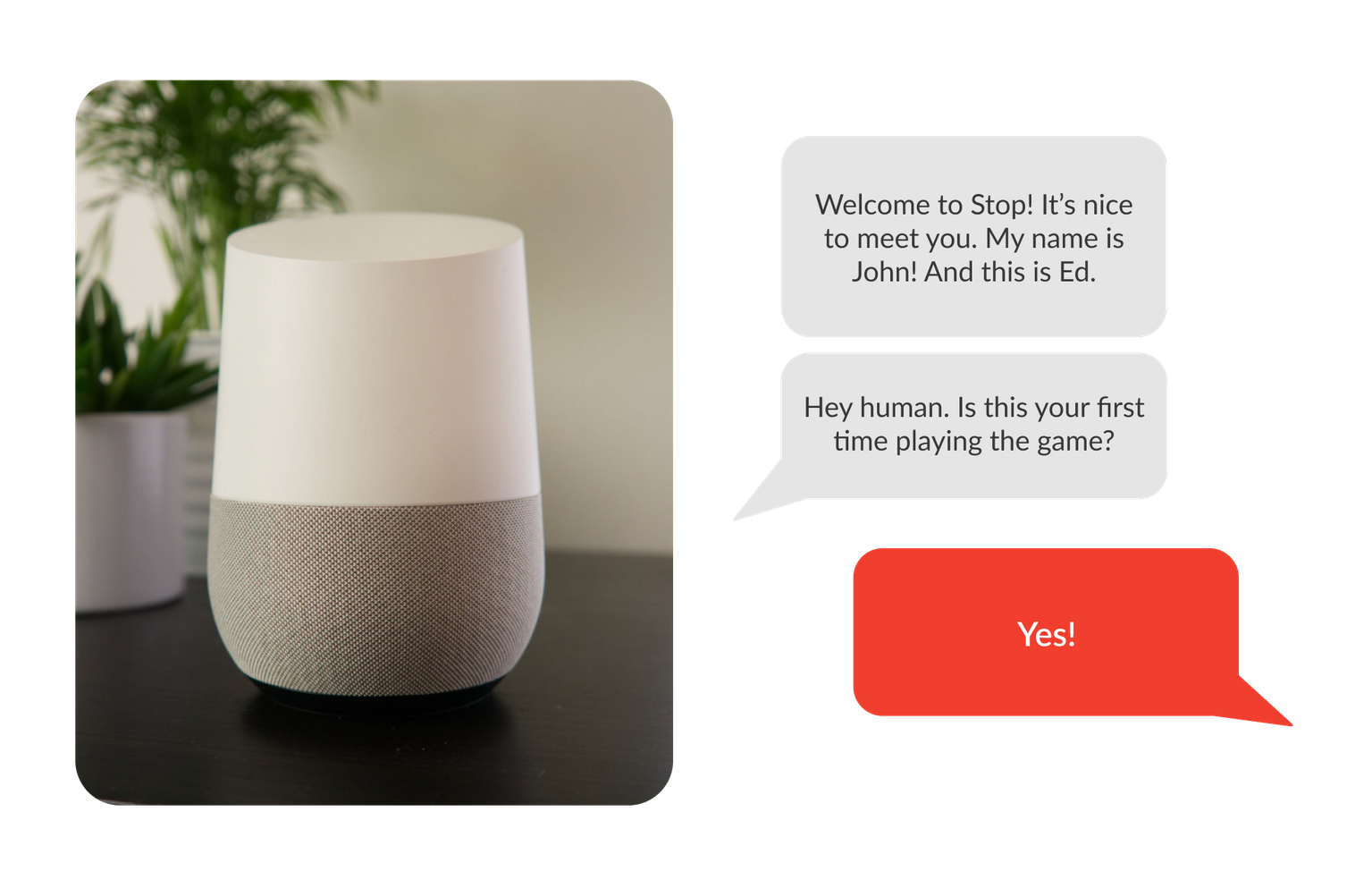
A voice-first approach
Although the game would work in devices with screens such as smartphones and Google’s Nest hub, we designed the game using a voice-first approach in which our primary goal was to make the experience smooth for voice interactions, even for devices with screen. When playing in a speaker, users should feel in control of the experience and we should make it as easy as having a conversation.
Technology
We built the game using a framework called Interactive Canvas that allows developers to add visual, immersive experiences to conversational Actions. That means we could use HTML, CSS and js to build an awesome experience for smart displays, making the it not a Voice-Only game.
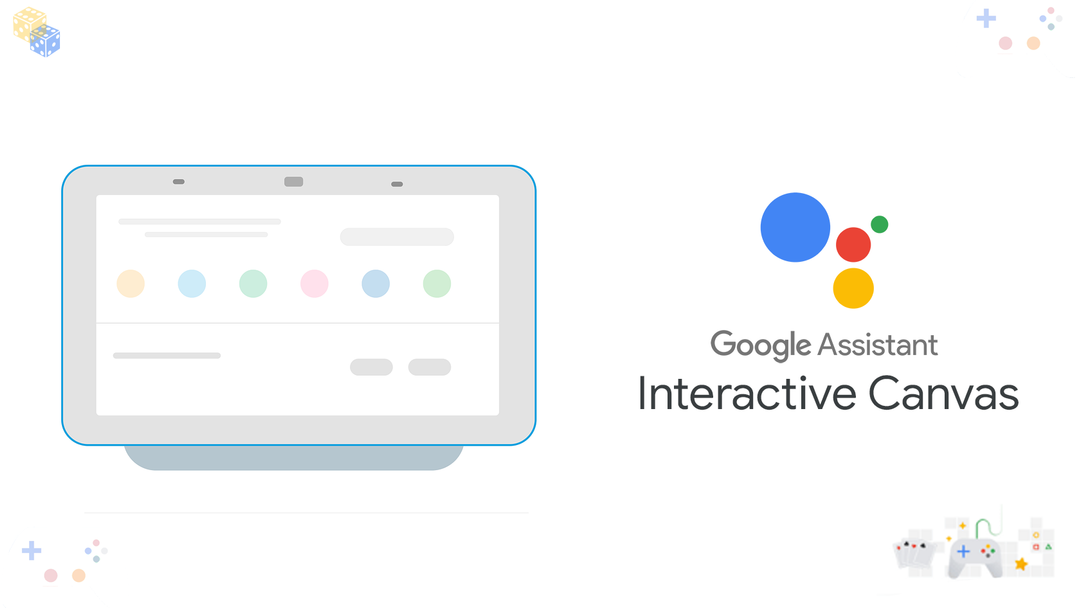
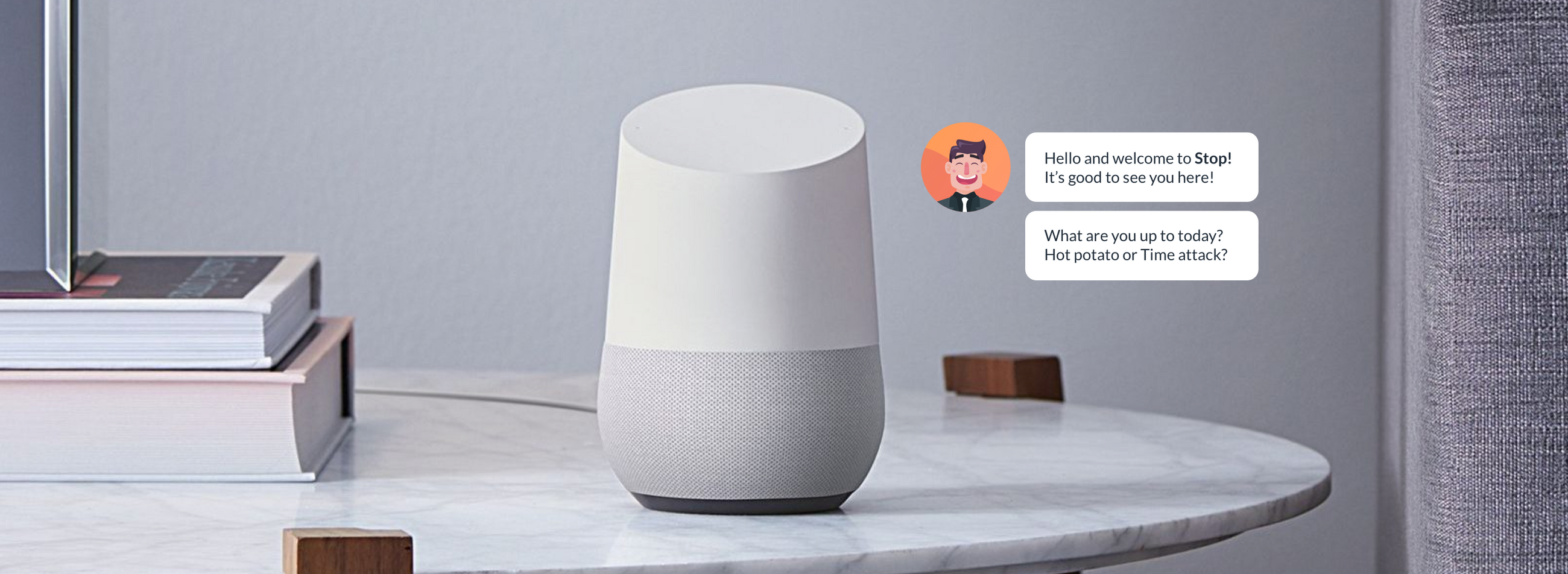
The game
Given the platform change, we had to create a unique experience from defining the whole conversational flow of the game up until defining characters to guide and entertain users.
Game characters and their personalities
When designing a voice interface, it’s really important that users can relate and connect with the system they’re talking to. Because of that, we really didn’t want to simply using Google Assistant voice as this would mean a robotical experience that doesn’t sound familiar and personal.
So, we created a characters to guide users through the game. These character would have their own voice, recorded by a professional voice actor. But, before going to studio to record their lines, we spend some time defining their personality and tone of voice.
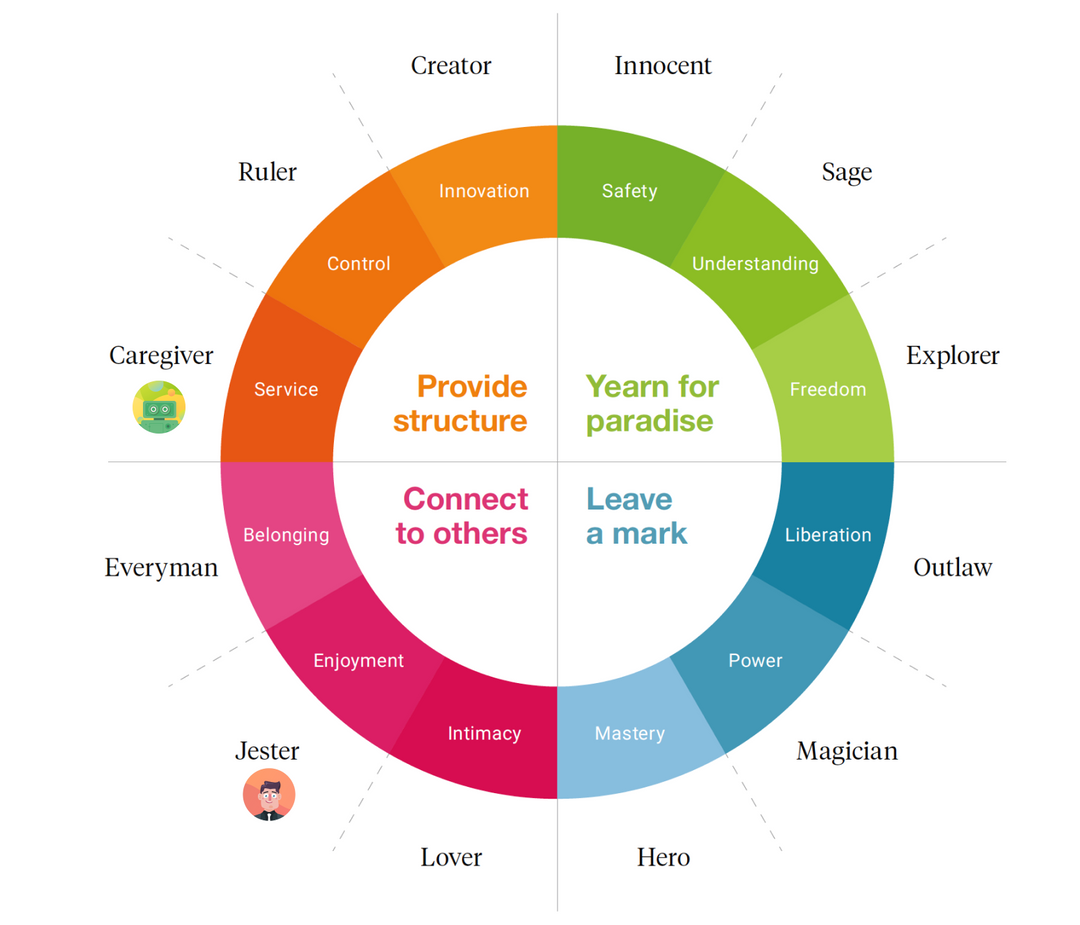
We used Jungian archetypes as a tool to build characters’ personalities and tone of voice.

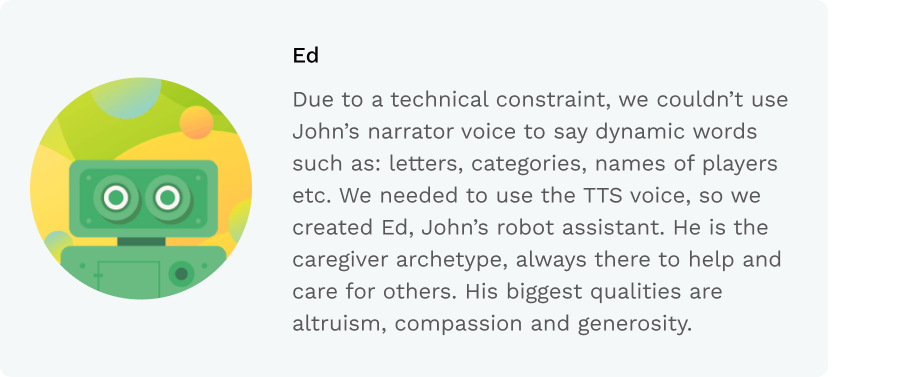
Game flow
When designing a Voice User Interface, flows can get massive because we have to consider all sorts of fallbacks, such as: users cursing the characters or each other, when the microphone stops working because the player took too long to answer, when the STT (Speak to text) doesn’t work properly and we need the player to repeat and it goes on to lots of different scenarios.

Game modes
We adapted Stop! regular game into a conversational flow, but we felt that the biggest strength of a VUI game was making it a party game so players could hang out and bond while playing in the same room. So, we defined for the first releases to have 2 different games modes.
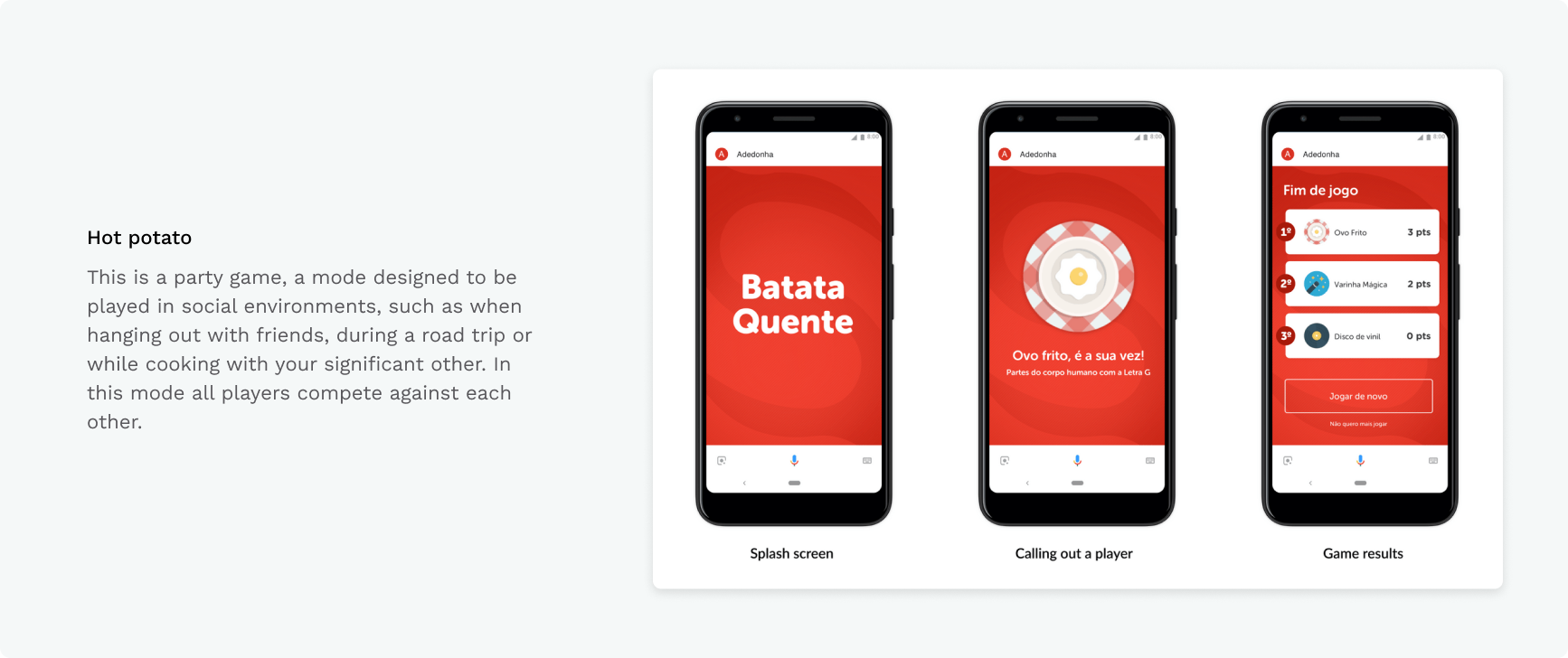

Launch strategy
Because refactoring something related to voice interactions involves going to the studio again to record new lines for the characters, we had to be very cautious while defining what would be the MVP.
To try and plan a safe strategy, we decide to do it in an iterative way by releasing new features and game modes as we learn with the previous releases.
The MVP should contain only the necessary for users to be able to interact and play a few matches while allowing us to uncover any issues or improvements that needed to be made/fixed.
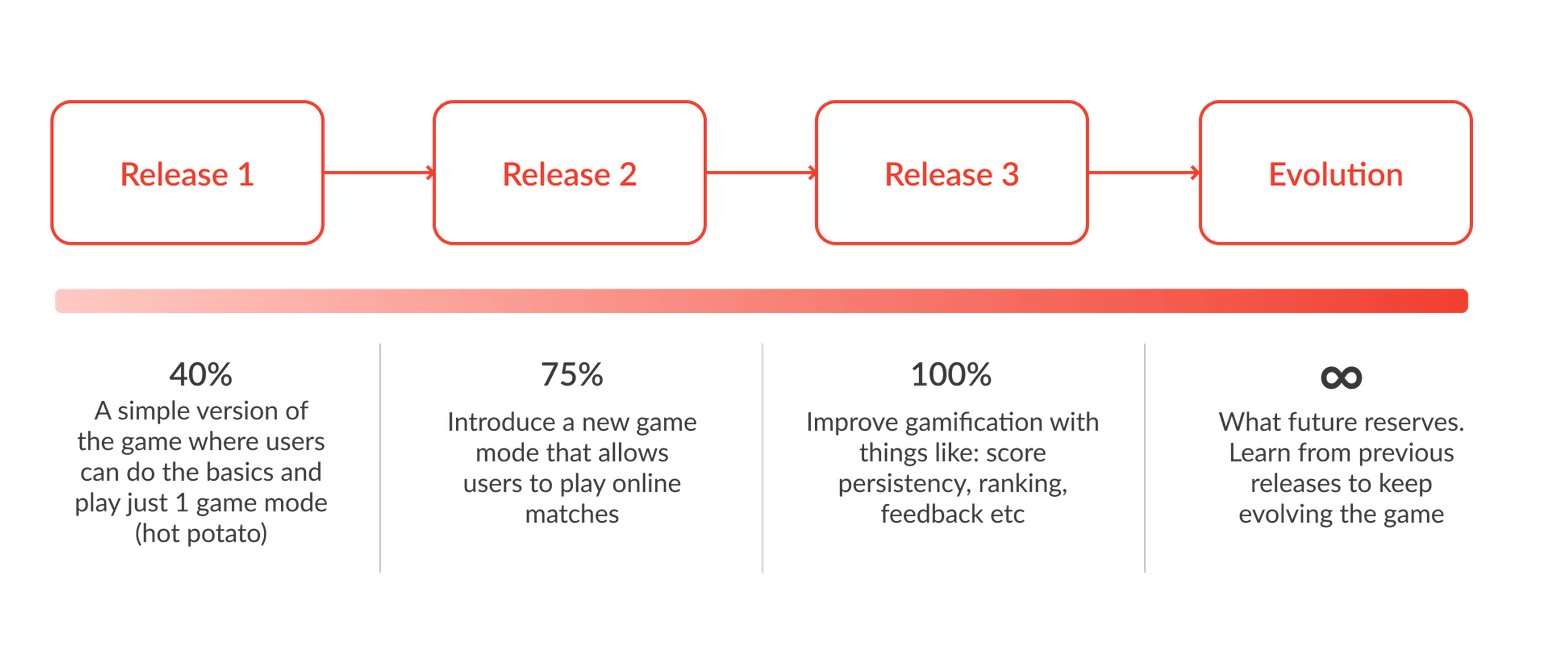
Thanks for coming all the way here :)
Honestly, I kind of struggle to keep this page up to date with my latest work, but I'd be happy to share more if you get in touch ☕️
🔗 Linkedin
📮 arthurbfcarvalho@gmail.com